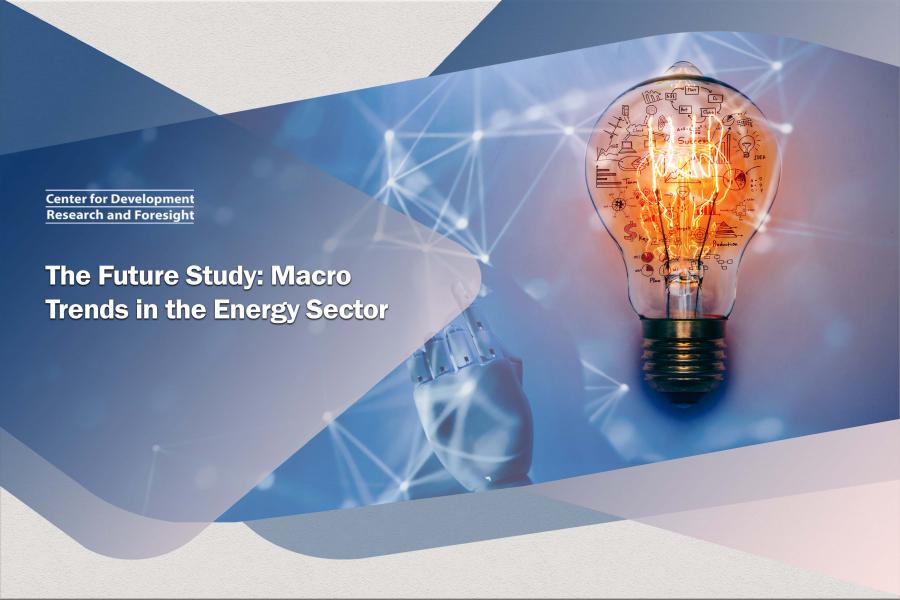
-
بررسی آییننامهها و دستورالعملهای برنامه هفتم پیشرفت
-
بررسی عوامل موثر بر افزایش تصادفات و تلفات جادهای و سوانح رانندگی و دادهکاوی تلفات انسانی
-
سازماندهی و بازآرایی فضایی آموزش عالی کشور
-
به روز رسانی سند ملی آمایش سرزمین
-
انجام مطالعات مناطق آزاد به عنوان نواحی پیشران اقتصادی کشور
-
اصلاح ساختار بودجه و پیاده سازی نظام یکپارچه مدیریت اطلاعات مالی دولت (IFMIS)

This research delves into the energy trade landscape in global markets, with a particular focus on Iran's position within this dynamic arena. Drawing upon future studies and market analyses, the study examines the projected conditions of the global energy market, evaluating and analyzing key variables such as alternative energy sources to crude oil and natural gas, oil and gas production trends, and price fluctuations of crude oil and natural gas.
Projections indicate that global primary energy demand will reach 365 million barrels of oil per day by 2040, representing an annual growth rate of 1.2% from the 2015 level of 365 million barrels per day. This increasing demand underscores the need for a secure energy supply across nations and highlights the intensifying competition within global supply and demand dynamics. Based on these estimates, global oil supply is expected to increase to 111.9 million barrels per day by 2040, while the demand for OPEC crude oil is projected to decline in the medium term but regain momentum in the long term. Additionally, studies suggest that global oil exports will gradually increase to less than 43 million barrels per day after 2025, primarily driven by demand from Asia and Oceania, coupled with rising exports from the Middle East and the Caspian Sea region.
The report subsequently explores the prospects of Iran's energy market, particularly the oil market developments, in the medium term until 2027, drawing upon insights from OPEC and Business Monitor reports. According to these reports, Iran's oil production is estimated to reach 4.7 million barrels per day by 2027, assuming the lifting of sanctions, representing an average annual growth rate of 1.1%. However, several key factors will influence this growth trajectory, including the manner in which sanctions are lifted, the evolution of oil prices, and the renegotiation of Iran's oil contracts.
A competitive landscape analysis of the Middle East and North Africa region is conducted to provide a deeper understanding of Iran's position within the region. The estimates indicate that the Middle East will lead the world in oil production growth in the coming years. Notable planned projects in the region include Saudi Arabia's ambitious plan to increase crude oil production to 12 million barrels per day, Kuwait's investments in its northern fields to maximize oil production, the United Arab Emirates' investments in oil field development and enhanced harvesting methods, and Iraq's plans to increase oil production levels by 2027.
The final section of the report identifies the strengths, weaknesses, threats, and opportunities facing Iran's energy sector. Iran's strengths include access to vast proven reserves of oil and gas, a strategic geographical location, a diversified portfolio of oil products, short distances between oil-rich areas and export terminals, and access to international waters. On the other hand, the sector's weaknesses include the impact of international sanctions on oil exports and investments in the oil and gas industry, a lack of focus on maintaining oil reservoir production and increasing harvesting studies, the absence of a comprehensive energy model and a suitable planning perspective, and limited capabilities in oil and gas exploration, extraction, drilling, and exploitation. Iran's opportunities in this industry include significant potential for oil and gas production, a favorable geopolitical position in the Persian Gulf region, the potential to increase export value by enhancing refining quality and efficiency, and the capacity to export technical and engineering services, particularly in downstream sectors like gas and oil pipelines. However, the sector also faces threats such as the potential reimposition of sanctions and international pressures, limited participation of foreign investors due to international political pressures, restricted access to advanced oil and gas technologies, non-compliance of some OPEC member countries with production decisions, and challenges in finding new gas export markets.



